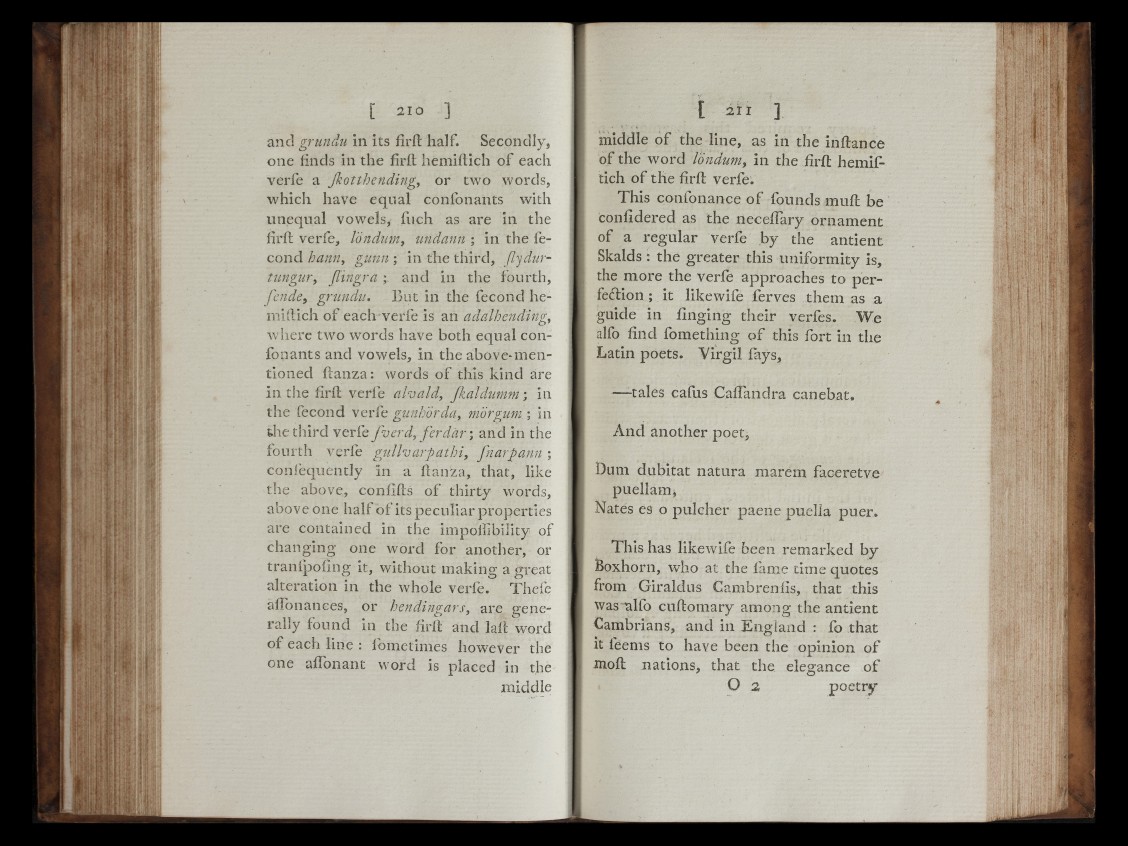
' i t
t B i
■ ! f ,
and grundn in its iîril half. Secondly,
one finds in the firil hemiftich o f each
verfe a Jhotthending, or two words,
which have equal confonants with
unequal vow'els, fuch as are in the
firft verfe, Idndumy undann ; in the fécond
hann y gunn ; in the third, flydur-
tungm'y Jïingra ; and in the fourth,
fcndey grundu. But in the fécond he-
miftich of each verfe is an adalhending,
where two words have both equal confonants
and vowels, in the above-mentioned
ftanza : words o f this kind are
in the firft verfe alvald, jkaldumm ; in
the fécond verfe gunhdrda, nidrgum. ; in
the third verfe fvcrd, ferdar \ and in the
fourth verfe gullvarpathi, fnarpann ;
coniequently in a ftanza, that, like
the above, coniifts of thirty words,
above one half of its peculiar properties
are cootaliied in the impoilibility of
changing one word for another, or
tranipoiing it, without making a great
alteration in the whole verfe. Theie
aiTonances, or hendingars, are generally
found in the firil and laft "word
of each line : ibmetimes however the
one aflbnant word is placed in the
middle
middle o f the line, as in the inftance
of the word Idndum, in the firft hemiftich
of the firft verfe.
This confonance o f founds muil be
confidered as the neceifary ornament
of a regular verfe by the antient
Skalds : the greater this uniformity is,
the more the verfe approaches to perfection
; it likewife ferves them as a
guide in iinging their verfes. We
alfo find fomething o f this fort in the
Latin poets. Virgil fays.
-tales cafus CaiTandra canebat.
1, I,
And another poet,
Dum dubitat natura marem faceretve
puellam;
Nates es o pulcher paene puella puer.
This has likewife been remarked by
Boxhorn, who at the fame time quotes
from Giraldus Cambrenfis, that this
was alfo cuftomary among the antient
Cambrians, and in Engiand ; fo that
it feems to have been the opinion o f
moil nations, that the elegance o f
O 2 poetry
i'? 'I
ft"
I p ;iB‘
ft